Back in 1800 Century How Much Was the Age Difference
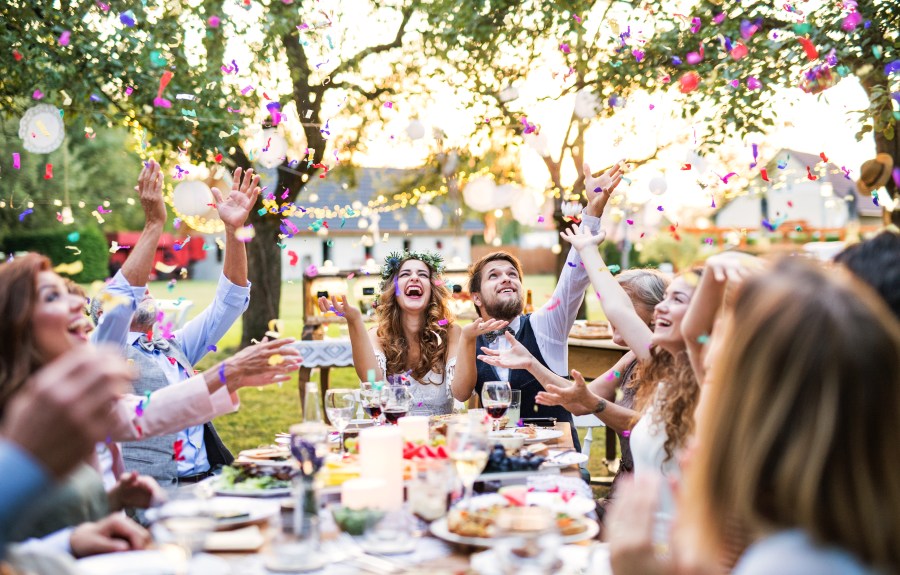
It's amazing to see how wedding trends have changed over the past 100 years. Nowadays, we're used to lavish white gowns, funny wedding hashtags and cinematic wedding videos. Although it's easy to believe that today's wedding trends have always been popular, the truth is that everything from the dresses to the desserts has changed over time. Even standard wedding traditions like white gowns and diamond engagement rings haven't always been the norm.
Let's take a journey through time and discover the most popular wedding trends. Maybe some could be used as inspiration for your big day.
1910-1917: Wartime Romances Bloom Through Letters and Weekday Weddings Were Common
During World War I, it was common to start romantic relationships through letters. While men from the U.S. were in Britain due to World War I, people fell head over heels and got engaged by writing each other letters. Believe it or not, most of the time these lovebirds never had a meeting face-to-face before getting married. This form of marriage was called a "hasty war wedding."
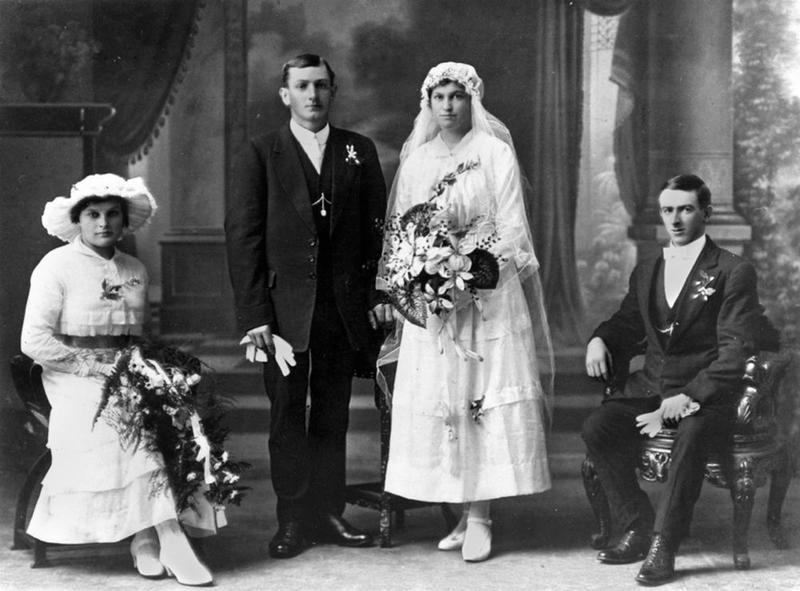
When people tied the knot in the early 20th century, it was traditional to hold the wedding ceremony at noon on a weekday. Saturdays were considered to be bad luck according to English folklore. During this time the rhyme went something like this, "Marry on Monday for health, Tuesday for wealth, Wednesday the best day of all, Thursday for crosses, Friday for losses and Saturday for no luck at all."
In the 1910s, bridesmaids not only wore matching dresses with one another, they also dressed exactly like the bride. This tradition goes back to ancient Rome. The bridesmaids acted as decoys at the altar to keep the couple safe from harmful spirits.
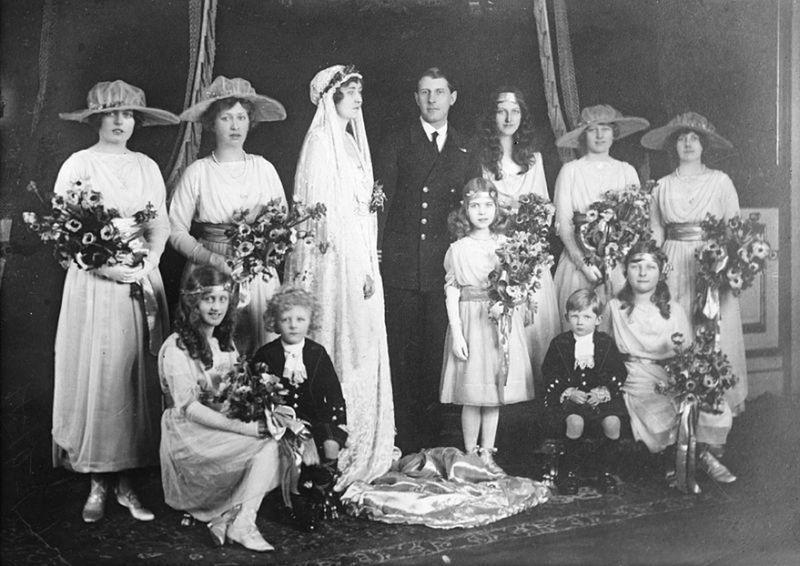
It was also a common belief that wearing the same dresses tricked past lovers, who might try to disrupt the wedding. By the Victorian era, newlyweds were less concerned about threats from demons or angry exes.
1920s: Short Hemlines Became Common
While long gowns were common in the 1910s, dresses in the 1920s featured embroidered lace, dropped waists, short hemlines and a high scoop neckline. According to Insider, flapper dresses of the Jazz Age heavily influenced bridal fashion. To go with the dress, brides wore glamorous cloche veils and jewelry.
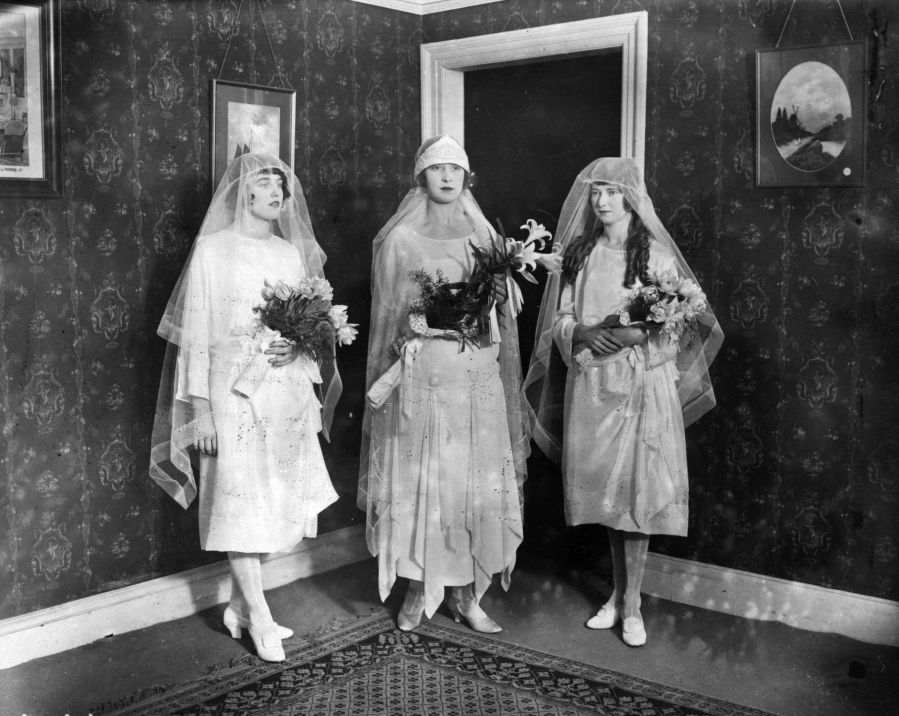
Wedding dresses at the time often rose above the knee, which was the shortest dresses had ever been until that time. Women not only wore shorter wedding gowns, but also shorter hairstyles. Brides often paired their wedding attire with a curled bob haircut. Giant bouquets also began trending.
1922: Princess Mary of England and Viscount Lascelles Have the Wedding of the Year
The ceremony of the year belonged to Princess Mary of England and Viscount Lascelles in February 1922. The royal couple sealed the deal at Westminster Abbey in London.
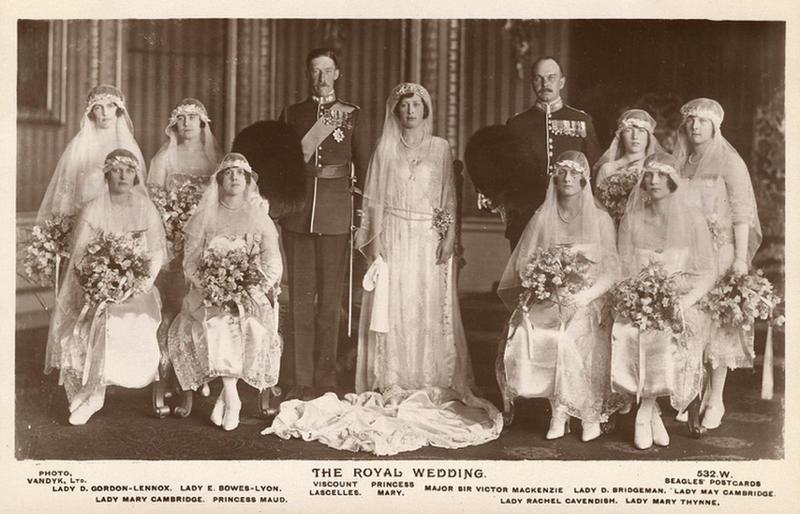
The bride and bridal party carried a bouquet of roses with long ribbons, another trend at the time. Messrs. Raville designed Princess Mary's dress to evoke "youthful simplicity with royal splendor." According to Vogue, the dress reflected "Britain's position as ruler of a vast empire; emblematic lotus-flower motifs embroidered in India featured alongside a domestic, yet equally symbolic, trellis work of roses in pearls and crystal beads."
1925-1929: The Wedding Registry Was Invented and the Stock Market Crashed
Newlyweds usually received silver, china, crystal and linen as gifts. Making sure these gifts weren't repeated was a problem. Marshall Fields, a department store, solved the issue by inventing the wedding registry in 1924. Shortly after, other department stores followed suit. This prevented couples from receiving the same gift multiple times.
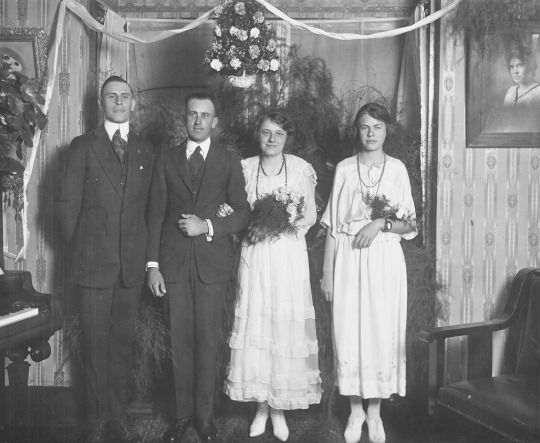
In 1929, the stock market crashed multiple times, leading to the Great Depression. This forced many couples to have strict wedding budgets. Most brides wore the best dress they owned instead of spending money on a brand new one. This was a tradition practiced by their grandmothers in the past. Some women began to wear dresses made of rayon, a less expensive fabric.
1930s: Lavish Weddings Included White Cake and Prohibition Was Over
In the 1930s, if you wanted to feel like royalty at your wedding, you purchased a white cake. In this time period, a wedding cake covered in white frosting symbolized wealth and social standing. Bakers made pure white frosting out of expensive refined sugars. We can thank Queen Victoria for the term "royal icing" because her extravagant wedding cake used pure white frosting.
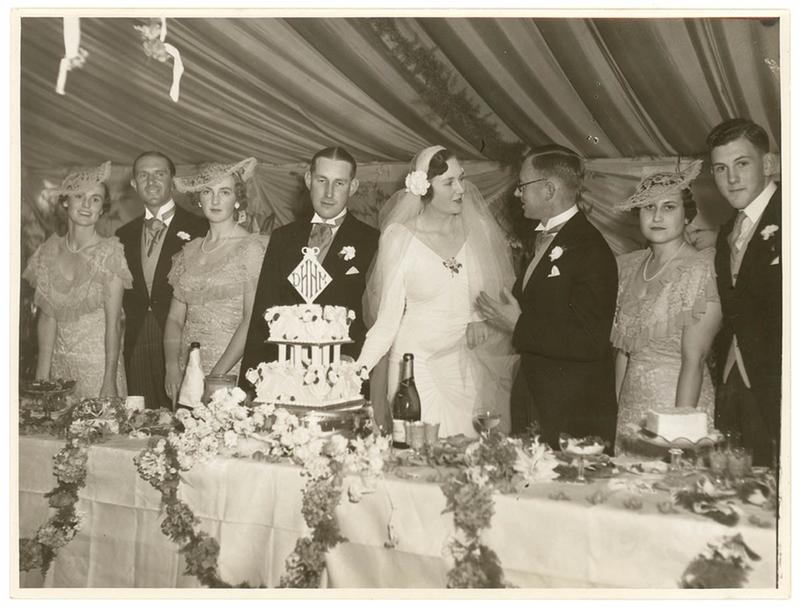
While it's easy to assume that alcohol has always been available at weddings, the fact is selling alcohol was illegal in the U.S. from 1920 to 1933. The Prohibition Act wasn't repealed until December 5, 1933, with the ratification of the 21st Amendment. Weddings were then allowed to serve alcohol, which led to today's popular tradition of open bars.
1931-1938: Las Vegas Became the "Marriage Capital of the World" and Wedding Dresses Weren't Always White
According to Country Living, Las Vegas became the ultimate wedding destination in 1931, when Clark County passed a new marriage law. Clark county made acquiring a marriage license easier because no blood tests and no waiting periods were required. These lenient marriage policies attracted a lot of couples, including celebrities. The first celebrities to get married in Sin City were Clara Bow and Rex Bell in 1931.
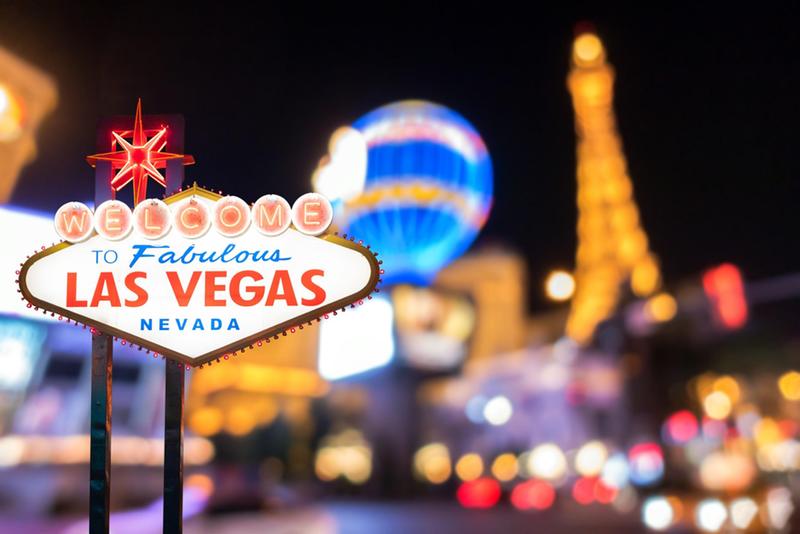
In the 1930s, white wedding dresses were mostly worn by wealthy brides. However, 29-year-old Princess Kira Kirillovna of Russia ditched the white dress when she tied the knot with Prince Louis Ferdinand in 1938. As stated in Royal Magazine, Kirillovna opted for a silver gown paired with her mother's diamond English Rose Brooch and her mother-in-law's Meander Tiara.
1939: Wartime Weddings Were Hastily Planned and Wedding Bands Became Common for Men
Since men could be sent off to World War II on any day, weddings were often quickly planned. Sometimes in just a few days. Brides usually wore modest dresses, while grooms had on military uniforms. According to The New York Times, 1.8 million weddings occurred in 1942. Couples usually invited immediate relatives to attend the ceremony in a small church and held a little reception after. Wedding cakes were mostly homemade with rationed ingredients.
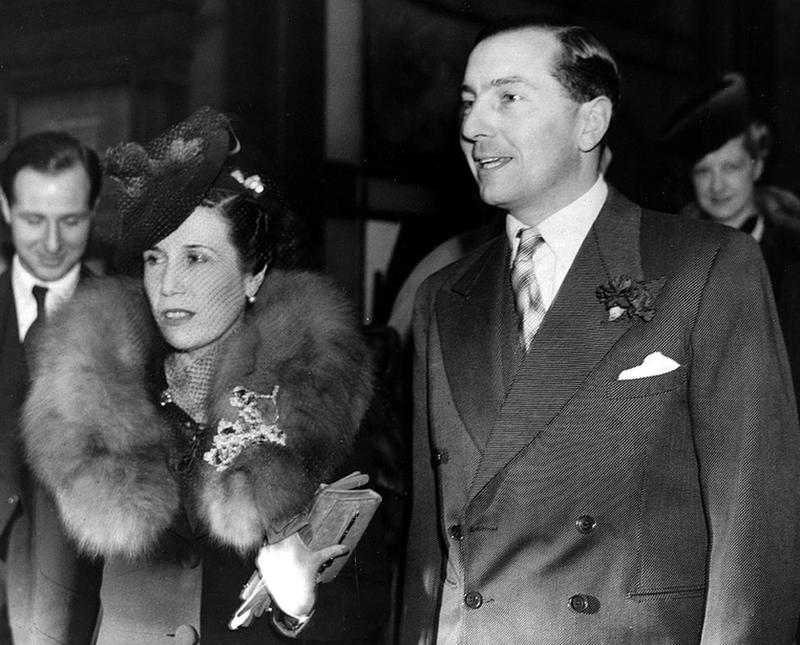
Since World War II, male wedding bands have been a common wedding tradition. More men than ever before chose to wear wedding bands while fighting overseas. The rings reminded married men of their partners and families back home.
1941: Gloria Vanderbilt Popularized the Wedding Cake Topper
In 1941, while most weddings didn't have cake toppers, heiress and future fashion designer Gloria Vanderbilt had one on her cake when she wed movie producer Pat DiCicco. Cake toppers existed since the Victorian era, but weren't high in demand until the 1950s, according to Country Living.
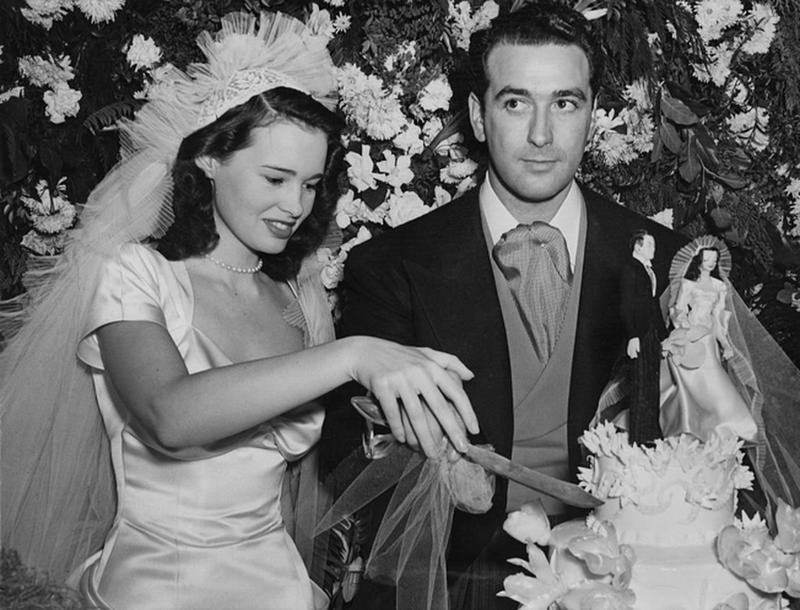
DiCicco married Vanderbilt at the Santa Barbara Mission on December 25, 1941. Vogue reported that Vanderbilt opted for a "draped and décolleté of white slipper satin" dress paired with a bouquet of calla lilies. After the ceremony, DiCicco and Vanderbilt held a reception at Thelma Furness's house in Beverly Hills.
1940s: Wartime Weddings Continued, But Lavish Celebrations Returned When WWII Ended
Short-notice weddings were still common due to the war in the 1940s. According to a 1942 issue of Vogue, "The 1942 schedule may run something like this: engagement announcement on Monday, invitations sent out by telegraph on Wednesday, the last handful of rice and rose petals flung on Saturday." Grooms often wore military uniforms during the ceremony.
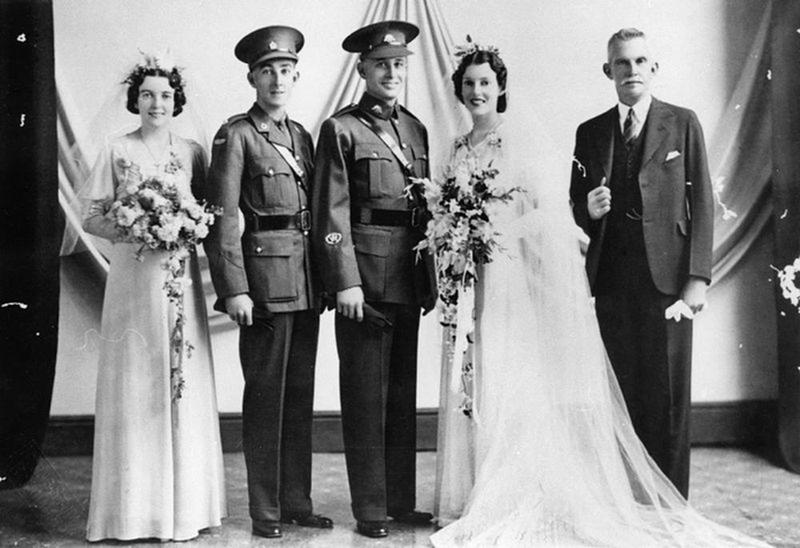
In 1945, World War II ended. People in the U.S. felt excited for weddings — and drinking. Life magazine reported in 1948 that Nat King Cole and Maria Hawkins Ellington served 197 bottles of champagne and spirits to their 600 wedding guests. Laundry techniques also improved, allowing more brides to afford white wedding gowns. Middle-class brides started wearing white dresses. The wedding dresses reversed from the short-hem popularity of the 20s, and usually included high necklines and long sleeves.
1947: A Diamond is Forever Campaign Boosted the Demand For Diamond Engagement Rings
While it was already common at this time to propose with an engagement ring, most rings featured rubies or sapphires. A copywriter from De Beers (a diamond company) changed the ring game when "A Diamond is Forever" was written and campaigned in 1947. De Beers' advertisements portrayed a diamond ring as a promise of everlasting love and companionship. The company also promoted celebrities wearing diamond rings, which inspired middle-class earners to purchase these bands.
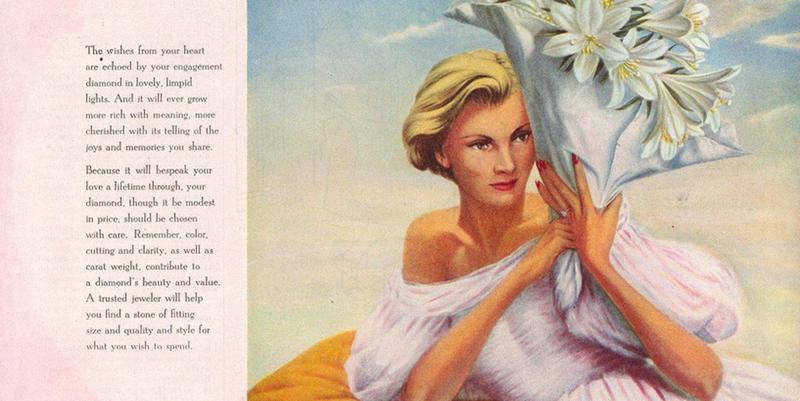
Before, diamonds weren't a big deal. After the slogan's debut, the diamond engagement ring was essential and became the expectation. Folks were buying diamond rings as family heirlooms as well.
1950s: Elizabeth Taylor Popularized The Sweetheart Neckline
Elizabeth Taylor was a Hollywood star from the 1940s to the 1960s. On May 6, 1950, the 18-year-old Taylor married hotel heir Conrad "Nicky" Hilton, then 23. MGM heavily publicized the expensive wedding to promote her 1950 film "Father of the Bride," starring Taylor and Spencer Tracy. Hilton was the first of Taylor's seven husbands. Their marriage lasted for eight months.
In 1950, Taylor wore two influential wedding gowns. The first was her actual wedding dress. The second was the sweetheart cut dress she wore in "Father of the Bride." As a result of the popular movie, the sweetheart neckline wedding dress gained popularity throughout the 1950s.
Elizabeth Taylor married 8 times but her first wedding was most memorable. In 1950 she married Nicky Hilton. pic.twitter.com/4cdzEDWEow
— Gina Freehill (@GinaFreehill) November 5, 2015
1951-1953: Extravagant Dresses Returned in Full Force and the Kennedys Were in Vogue
Extravagant gowns made a comeback after World War II. In the 1950s, ball gowns with full puffy skirts and fingerless gloves turned mainstream since fabric was no longer rationed. The ball gowns usually featured an off-the-shoulder collar or scooped neckline.
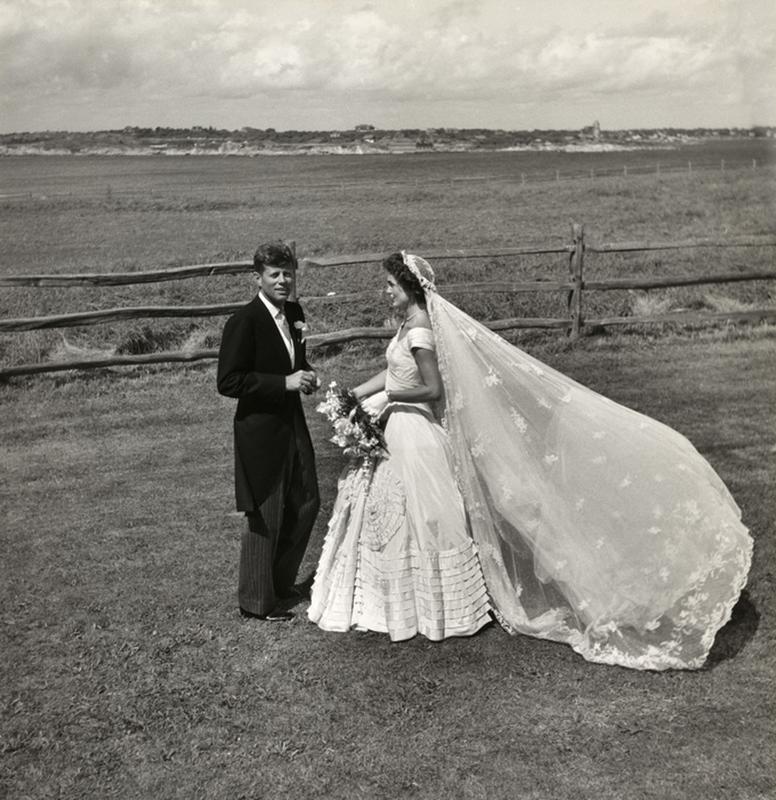
In September 1953, the wedding of John Kennedy and Jackie Bouvier made headlines. Bouvier wore a lace dress made from 50 yards of fabric paired with her grandmother's veil. The wedding took place in Newport, Rhode Island, and 800 guests witnessed the couple exchange vows. After the ceremony, 400 more guests attended the reception at Hammersmith Farm. Kennedy and Bouvier spent two hours greeting all of their guests.
1954-1959: Short Hemlines Were Popular Again and Cake Toppers Became Mainstream
Ball gowns may have been popular, but short hemlines also returned in the 1950s. In 1954, 22-year-old Audrey Hepburn flaunted a short hemline gown when she tied the knot with 37-year-old Mel Ferrer. Shorter dresses meant people would notice the bride's shoes more.
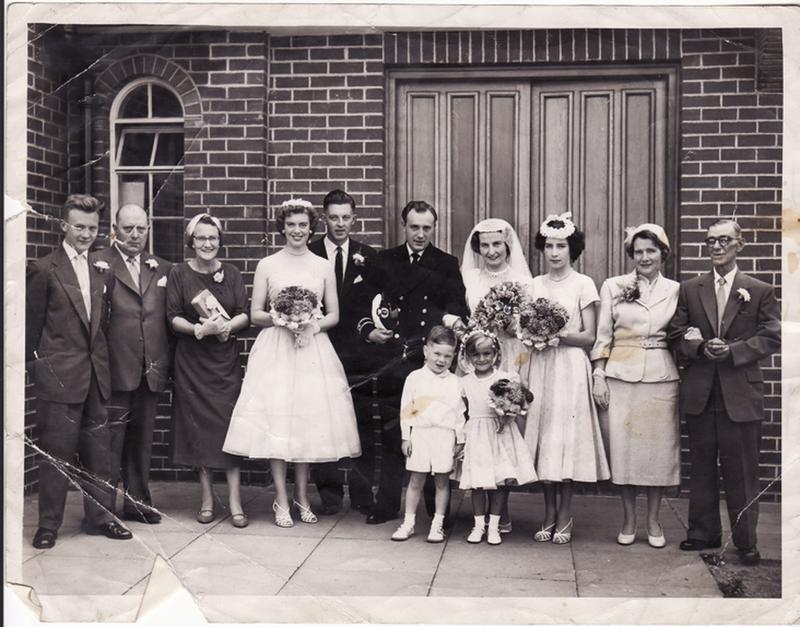
Bride and groom toppers caught on in the 1950s because they started to be made of plastic, and plastic became affordable. Cake toppers usually sat on top of elaborately decorated cakes. According to People, in 1956, Grace Kelly's royal wedding cake was topped with a "revolving miniature of the bride and groom that played 'Ave Maria' and Mendelssohn's 'Wedding March.'"
1960s: Fashion Highlighted High Empire Waist Gowns and Wedding Playlists Grew
Brides usually wore empire-waist dresses and pillbox hats with a bouffant style veil in the 1960s. Virginia Quinn sported this popular attire when she married comedian Bob Newhart January 12, 1963.
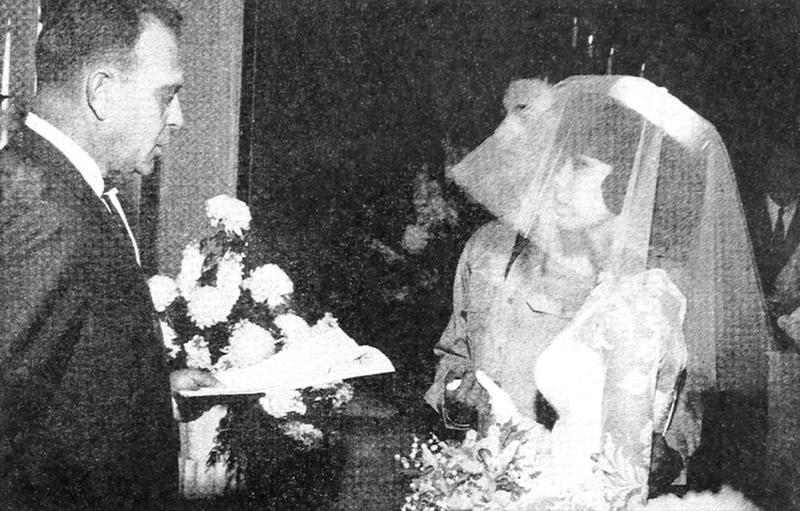
In 1960, Etta James covered Mack Gordon and Harry Warren's 1941 tune "At Last." Since then, millions of couples have added her version of the song to their wedding playlist.
Another classic song added to playlists include, Audrey Hepburn performing Henry Mancini's song "Moon River." Hepburn sang it in the 1962 film "Breakfast at Tiffany's." As a result, Mancini's song won two Grammy Awards, Record of the Year and Song of the Year. During wedding processionals, bands often play "Moon River" according to Country Living.
1970s: Brides and Grooms Had Many Different Choices of Wedding Attire
The 1970s were a time of change, as the Vietnam War era merged with disco. Some brides wore traditional gowns while others sported pantsuits or a hippie style dress. Colored tuxedos for grooms and groomsmen also became popular.
Bianca Jagger and Caterina Caselli were a couple of celebrities who embraced the free wedding styles of the '70s. In 1971, Bianca Jagger donned an Yves St. Laurent's Le Smoking tuxedo, topping the look with a wide-brimmed hat and a short veil. Italian singer, film producer, and actress Caterina Caselli paired a choker with her wedding dress in 1970.
Bianca Jagger at her wedding (1971) pic.twitter.com/l23FmAoaPA
— Lost In History (@HistoryToLearn) June 25, 2017
1973: Princess Anne's Wedding Dress Influenced Fashion and Headpieces Gained Popularity
Princess Anne wore a turtleneck gown with medieval-influenced sleeves on her wedding day. The ceremony took place at Westminster Abbey in London November 14, 1973. About 500 million people around the world watched Princess Anne get hitched to Mark Phillips. As a result, her highneck dress with big flowy sleeves became influential in the '70s.
Another trend was actress Simonetta Stefanelli's flower headpiece for the wedding scene in the 1972 film "The Godfather." Some brides paired headpieces with veils, while other brides wore only the headpiece.
Taken #onthisday in 1973…Princess Anne and Captain Mark Phillips pictured leaving Westminster Abbey after their wedding ceremony. The day was declared a bank holiday and an estimated 500 million people worldwide watched the ceremony – they divorced in 1992.?: @Mirrorpix pic.twitter.com/iXr5Ucvc0x
— Johnny Goldsmith (@MirrorJohnny) November 14, 2018
1976: Brides Embraced Natural Makeup and Traditional Venues Changed
Carefree and natural makeup boomed in the '70s. Brides wore less makeup or a natural face on their big day. Jojo Starbuck and Bianca Jagger happily sported the fresh face look at their weddings.
Unique wedding attire and fresh faces weren't the only trends on the rise. More people opted out of getting married in churches and chose other venues instead. Couples commonly wanted outdoor wedding ceremonies, which took place in a backyard or a beach. Outdoor wedding ceremonies remain popular to this day.
A little disappointed MJ didn't wear this Terry Bradshaw tux to his wedding. Oh well. pic.twitter.com/hsWweu04aw
— SI Vault (@si_vault) April 29, 2013
1978: Romantic Playlists Grew and Disco Music Started to Dominate Weddings
By 1975, the options for romantic songs for couples to dance to at their wedding had skyrocketed. "Your Song" by Elton John, "Signed, Sealed, Delivered, I'm Yours" by Stevie Wonder, "We've Got a Good Thing Going" by The Jackson 5, and "Two of Us" by The Beatles became popular wedding songs. Joe Cocker released "You Are So Beautiful" in 1974 and it took over wedding playlists a year later.
Around 1978, disco music grew more popular than other genres at weddings. Disco inspired grooms to wear white suits at their weddings. The popularity of disco also encouraged couples to take dance lessons before their special day. Carl Douglas's "Kung Fu Fighting," the Bee Gees' "Stayin' Alive," Gloria Gaynor's "I Will Survive" and Village People's "Y.M.C.A.," became the top hits to play at weddings and have remained classic group dance hits at weddings today.
WEEK IN PHOTOS Aretha Franklin and her new husband, Glen Turman, arrive at a Los Angeles hotel, April 17, 1978 for their wedding reception..VOA pic.twitter.com/8NGEfCvowF
— Matta Abraham (@MattaAbraham1) August 24, 2018
1980s: Fashion Got Bigger and Princess Diana Had a Fairytale Wedding
Wedding trends in the '80s focused on large styles. The 1980s introduced poofy shoulders, taffeta, lacy sleeves, long veils, and cathedral trains. As a result, giant bouquets were packed with flowers such as peonies, ferns and apple blossoms.
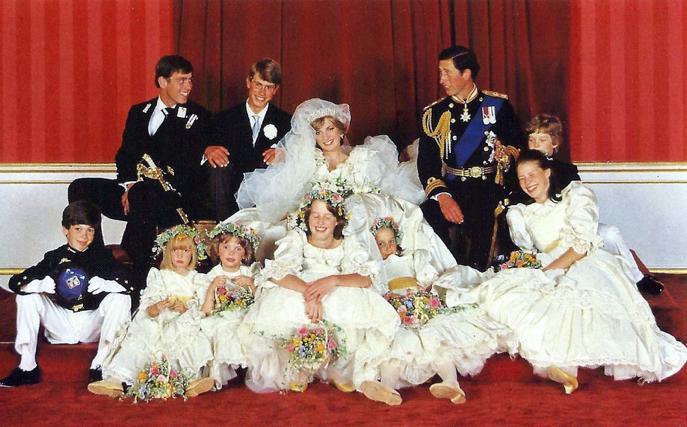
No one was prepared for how much Princess Diana's wedding would influence the industry. In 1981, at least 750 million people around the world watched Lady Diana Spencer and Prince Charles's wedding on television. Diana's wedding dress was detailed with lace, sequins, and 10,000 pearls. To top off the look, she wore a 25-foot train of ivory taffeta and antique lace. At the reception, the couple had a five-foot-tall main cake and 27 smaller wedding cakes. The total cost of the wedding came out to $48 million.
1981-1989: Wedding Videos and Extravagant Weddings Became Popular
In 1983, lovebirds could relive their special day over and over again by recording it on Sony's new consumer camcorder. Camcorders opened job opportunities for videographers and a chance for people to create their own special version of Princess Diana's wedding.
The royal ceremony also set a new expectation for extravagant weddings. More expensive dresses and suits became the norm. Prices for wedding merchandise and services soared. More couples wanted to have complex multi-tiered wedding cakes, according to Country Living. Three or four tiers were the norm, but some reached as high as eight tiers.
Maria Shriver poses with her bridesmaids after the ceremony upon her wedding to Hollywood action star Arnold Schwarzenegger, 1986, pic.twitter.com/48TiUsi7Hp
— Tanja (@T__twitt) November 26, 2016
1990s: Vera Wang Started Her Bridal Collection and Movies Added to the Wedding Industry Frenzy
In the 1990s, Vera Wang launched her bridal collection and opened her flagship bridal salon in New York City. As a result, many brides demanded a Vera Wang dress for their special day. Wang became a world fashion icon in the '90s.
The '90s were also a wedding movie heyday. "Father of the Bride", "Four Weddings and a Funeral", "Muriel's Wedding", "My Best Friend's Wedding" and "Runaway Bride" were just some of the classics. These movies helped the wedding industry grow even more expensive. The movies gave couples more ideas for their weddings, including pre-wedding parties, destination weddings, floral bridesmaids' dresses, extravagant venues, expensive menus and cakes with fresh flowers.
Today in 1991 Michael Jackson gave away the bride (Elizabeth Taylor) to Larry Fortensky at their wedding in Neverland ranch.#MJFAM pic.twitter.com/mqIZcyzat0
— $₩IFT (@GMJHDvideos) October 6, 2017
1994-1995: Céline Dion's Wedding Attire Stood Out and the Gift Registry Went Online
While most bridal gowns were simple in the '90s, Céline Dion took her 1994 wedding attire to a whole new level. On December 17, 1994, the singer wore a seven-pound crystal tiara. Tiaras were popular at the time, but usually weighed less than seven pounds. Dion married Rene Angelil, her manager, and the couple stayed together until Angélil passed away in 2016.
Target made everyone's lives easier and when it opened the first online gift registry in 1995. Over 125,000 people registered within the first year. Imagine how difficult it would be if you still weren't able to share your wedding registry online. Online registries allowed couples to add potential gifts from different websites and see which gifts have already been purchased.
Today Celine and René celebrate their 20th wedding anniversary! Send them your love:http://t.co/V6MdwAueSb–TeamCeline pic.twitter.com/goqKhCIZc2
— Celine Dion (@celinedion) December 17, 2014
1996-1999: Brides Opted For Spaghetti Straps and Carried Smaller Bouquets
Dresses were simple and minimal in the 1990s with the exception of Celine Dion's attire. Carolyn Bessette's Narcisco Rodriguez spaghetti strap dress became iconic in '90s fashion. Bessette privately wed John F. Kennedy Jr. at Cumberland Island chapel in 1996.
Simple flower arrangements also gained popularity. Giant elaborate bouquets were out and instead, brides chose to carry smaller flower arrangements with ribbons.
On this day, 21 years ago, John Kennedy, Jr. and Carolyn Bessette were married. One of the most iconic weddings- simple and elegant. pic.twitter.com/iRhZjfHIYP
— The Daily Buzz (@dailybuzztv) September 21, 2017
2000s: Friends Made Disposable Cameras Popular and Strapless Dresses Became a Favorite
As people picked venues outside of churches, the dress code became more relaxed. Dresses went from spaghetti strapped to strapless. Bridesmaids and guests also sported the style for the special occasion. Celebrities who rocked strapless wedding dresses included Jessica Simpson, Carmen Electra and Erica Levy.
Disposable cameras existed in the 1990s, but didn't blow up until 2001, after "Friends" released the episode in which Monica and Chandler get hitched. The wedding episode featured guests using the fun little gadgets. It was a go-to staple at weddings until the advent of the smartphone. Now instead of disposable cameras capturing candids that would need developing, we use our iPhone or Galaxy and a hashtag.
Happy 17th Wedding Anniversary to Monica and Chandler! ❤️?? pic.twitter.com/zVtylRmrjt
— Friends TV Show (@HookedonFriends) May 15, 2018
2002-2005: Traditional Wedding Cakes Are Out
People grew obsessed with wedding cupcakes in the 2000s. It soon became normal for weddings to feature a cupcake tower, rather than the classic giant cake. According to Delish, "Sex and the City's" Carrie Bradshaw ignited the cupcake craze after visiting the cupcake capital, Magnolia Bakery, in New York.
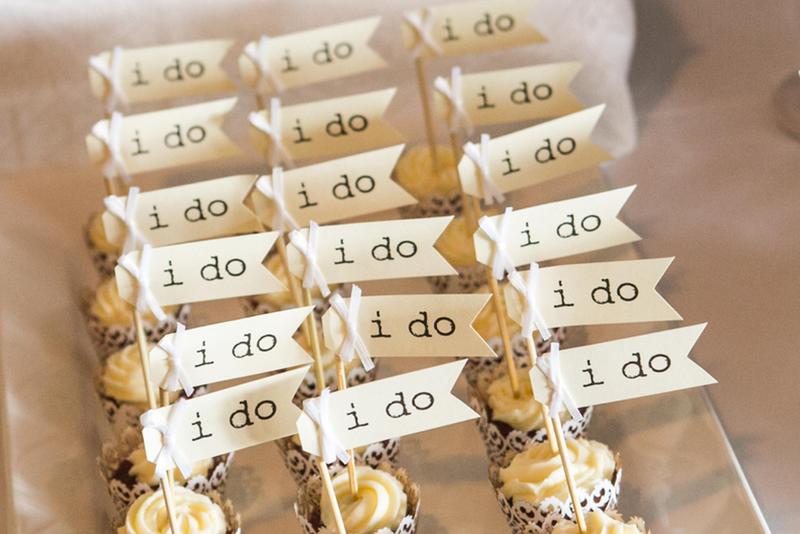
Other options for couples who weren't interested in a traditional wedding cake included festive macarons, ice cream cakes, donuts, bundt cakes, and savory cakes. DIY desserts also began to rise in popularity during this time, with make-your-own s'mores stations and cookie decorating tables becoming popular.
2006-2009: Honeyfund Made it Easier to Gift Money and the Media Fueled the Wedding Industry Craze
Instead of traditional gifts, friends and family were able to help fund couples' honeymoons online using Honeyfund starting in 2006. Money was also a popular option for a wedding gift, but people often felt awkward giving a check or cash. Honeyfund made contributing easier than writing a check. Now, you can help fund more than a honeymoon; couples often use Honeyfund to finance wedding expenses or a new home.
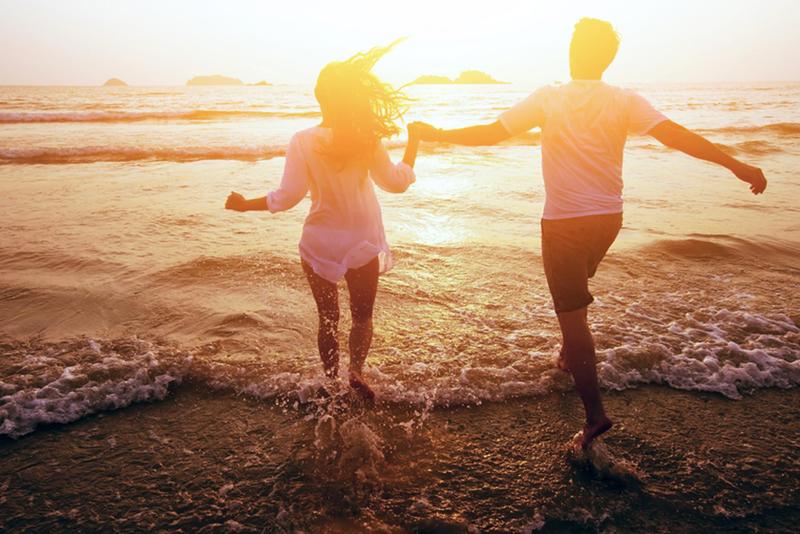
By 2007, weddings became less personal and private. Couples wanted to publicize their special day using the media. On "TODAY Throws a Martha Stewart Wedding" Jessica Mapel and Cody Heleson got hitched on TV. Millions of the show's viewers planned every step of the wedding. That same year "Say Yes to the Dress" premiered, showing people the experience of selecting and purchasing a gown.
2010: Pinterest Exploded and Changed Wedding Planning
Having trouble thinking of ideas for your special day? Organizing a wedding got more fun when Pinterest became available in March 2010. Newly engaged couples created personalized wedding boards to help them plan every wedding detail. Pinterest reports, "Every year, 40 million people turn to Pinterest for guidance across the wedding planning journey."

People found inspiration for bouquet styles, decorations, table set ups, wedding party poses, signs, color guides, and invitations. When you search for "wedding" on Pinterest's home page, there are hundreds of photos and articles you can add to a board.
2011-2012: Prince William and Kate Middleton Tied the Knot and Wedding Blogs Boomed
Millions around the world watched Prince William and Kate Middleton exchange vows April 29, 2011. The ceremony took place at Westminster Abbey in London, United Kingdom, and the celebration continued at Buckingham Palace. State carriages, Foot Guards and Household Cavalry were part of the day. Kate's v-neck satin gown was layered with a lace bodice and included an appliqued skirt. Prince William had on an Irish Guards mounted officer's uniform plus a forage cap. His best man was his brother, Prince Harry.
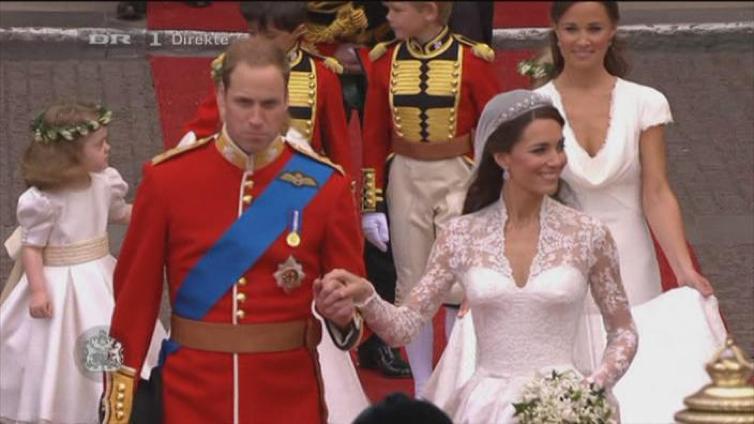
Wedding blogs became popular in the 2000s, helping brides plan their dream wedding. In 2007, Style Me Pretty was introduced. Next, A Practical Wedding and 100 Layer Cake were established. By the time 2012 rolled around, wedding blogs were essential to the planning process.
2013-2015: Social Media Seeped Into Weddings and Same-Sex Marriage Became Legal
If a wedding wasn't posted on social media, did it really happen? Around 2013 couples started creating personalized wedding hashtags. Some couples even hired writers to come up with unique hashtags while others used online generators or brainstormed hashtags on their own. If couples use a wedding hashtag that already exists, the hashtag album will include photos from another couple's wedding.
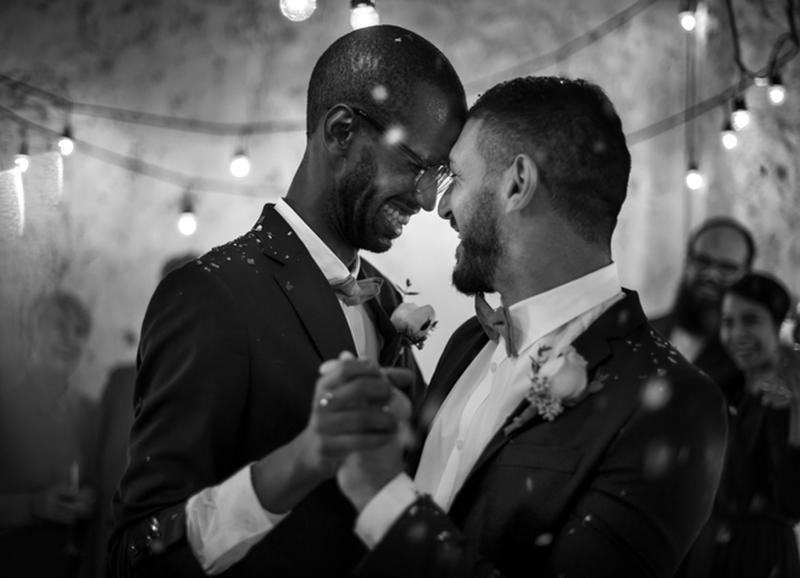
In 2015, same-sex marriage was recognized as legal in all 50 states by the Supreme Court of the United States. Many professional organizations supported and fought for equal marriage rights for same-sex couples. Lance Bass (from N'SYNC) and actor Michael Turchin was the first same-sex couple to be married on television.
2018: The World Watched The Royal Wedding of Prince Harry and Meghan Markle
The roles have turned and Prince William was the best man in 2018 for his brother's royal ceremony. People couldn't stop talking about the wedding of Prince Harry and Meghan Markle May 19, 2018. Hundreds of millions of viewers around the world watched the royal ceremony. The big day took place in St George's Chapel at Windsor Castle in the United Kingdom.
Meghan's beautiful silk attire included long sleeves, a boat neckline, a long train, and Queen Mary's diamond bandeau tiara. Her 16-foot long veil was embroidered with flowers such as the Wintersweet and the California Poppy. Her bouquet contained Prince Diana's favorite flower, Forget-Me-Nots, as well as sweet peas, lily of the valley, astilbe, jasmine and astrantia. After the lovely ceremony, the royal couple carraged to the reception and ended the night with a firework display.
Meghan Markle presents wedding dress designer with fashion award https://t.co/UeU7exrOit pic.twitter.com/cZGnhvWCo9
— Reuters Top News (@Reuters) December 11, 2018
Wedding Trends Have Transformed
Since the 1910s, some our most basic wedding traditions have changed. Wedding ceremonies started as small celebrations hurches and now many people choose to celebrate outdoors. In the past, only wealthy women could afford a white wedding dress. Alcohol was allowed at weddings after The Prohibition Act was repealed and today open bars are a fixture of weddings.
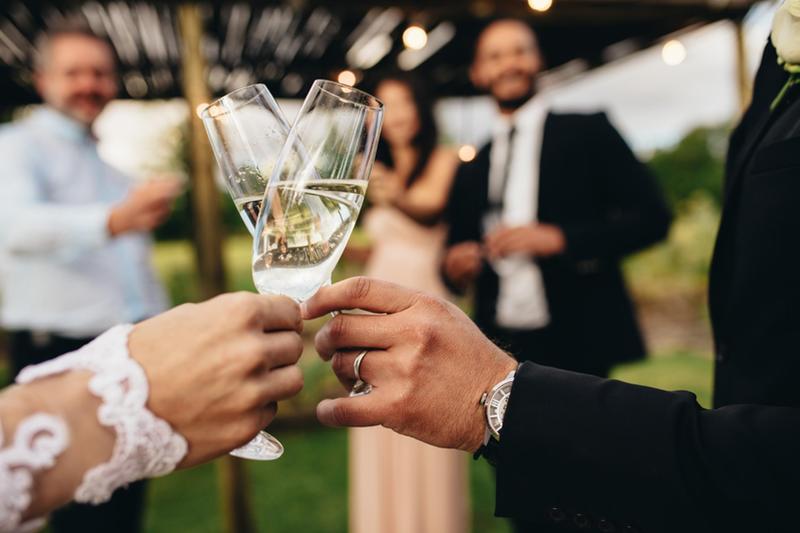
We also saw celebrities and the media heavily influence the wedding industry. After the 1980s, couples increasingly wanted their weddings to reflect their personal likes and interests. In more recent years, social media has allowed couples to explore wedding trends they may have never before seen.
MORE FROM ASK.COM
Back in 1800 Century How Much Was the Age Difference
Source: https://www.ask.com/culture/wedding-trends-through-the-ages?utm_content=params%3Ao%3D740004%26ad%3DdirN%26qo%3DserpIndex
0 Response to "Back in 1800 Century How Much Was the Age Difference"
Enregistrer un commentaire